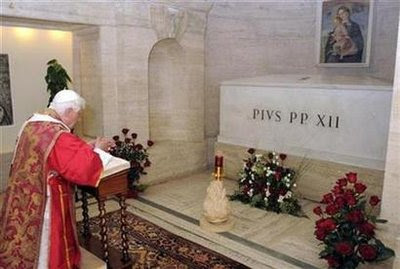It has and always will be a pious and holy practice to pray for the repose of the souls who have passed on to the next life. However, in the past few decades the occurrence of prayers said for the souls in purgatory and their blessed repose have fallen into such disuse that such a lack of charity for their souls is an atrocity. For generations, Catholics would pray for the souls of the faithful who have gone before them in the sleep of death and hope in the future resurrection.
You as a member of the Catholic Church on earth (i.e. The Church Militant) have a solemn duty to pray for souls in purgatory (i.e. The Church Suffering). As this month slowly draws to a close we shall in the not too distant future arrive at the month of November, traditionally devoted to praying for the dead. However, these prayers and devotions should not only be prayed in November.
It is a traditional and pious practice with references not only in the Magesterium of the Church but also through the Holy Scriptures. As stated in the holy book of Maccabees: "It is a holy and wholesome thought to pray for the dead, that they may be loosed from sins" (2 Maccabees 12:46). In 230 AD Tertullian writes, "The widow who does not pray for her dead husband has as good as divorced him."
Topics:
1. Requiescat in Pace (RIP)
2. Judgment (Particular and Final)
3. All Souls Day
4. Funeral Masses (all types)
5. 3rd, 7th, and 30th Day After Burial Devotions
6. Funeral Mass of the Supreme Pontiffs
7. Prayers for Souls in Purgatory
8. Obtain Indulgences for the Dead
1. Requiescat in Pace (RIP)
Unfortunately, the sacred in many ways has become too common and ordinary so that we fail - when encountering holy things - to stand in the awe appropriate for the situation. In much the same manner, we have become accustomed to the three letters R.I.P on the headstones of those who have died; yet, few of us adequately understand the liturgical connection of these three simple letters to the Mass said for the repose of their souls.
The expression R.I.P, despite modern understandings, does not stand for "rest in peace" but instead represents the Latin phrase "requiescat in pace", who English equivalent is coincidentally "rest in peace". These three holy letters were not formerly placed on the tombstones of all of the departed or even all "Christians" but only on the tombstones of Catholics who have departed. The phrase "requiescat in pace" is taken from the final prayers of the priest at the place of burial:
Anima eius et animae omnium fidelium defunctorum per Dei misericordiam requiescant in pace whose English equivalent is
May his soul and the souls of all the departed faithful by God's mercy rest in peace.
The letters RIP first appeared in the 8th century although it did not become common on the tombstones of Catholics until the 18th century. The Roman catacombs bear witness to prayers for the dead since many prayers for the dead are preserved on the tombs of the departed (e.g.
Mayst thou live among the saints, 3rd century). The phrase refers not to our wish for their bodies to live peacefully in the ground but our prayer that their souls may be forgiven by Christ the Judge and found worthy - after the necessary purification - to enter into Heavenly beatitude. Namely, we pray that the souls of the departed shall one day be worthy for beatitude - to behold the face of God in Heaven.
Consequently, it should be viewed as a pious and humble practice to frequently visit the cemeteries and pray for the dead. And surely, when you see the letters R.I.P you should pray for the salvation of the departed. Recall that our prayers are outside of time so do not fail in praying for the dead because you assume that you are "too late". Rather, your prayers offered in a humble and contrite spirit pay the price of the departed's sins and free their souls from purgatory (c.f. Mt. 5:48, Mt. 5:26, Mt. 12:32, 1 Cor. 15:29, 1 Tim. 1:16). It is in this instance that your prayers have truly saved a soul.
2. Judgment
It is a dogmatic teaching of the Faith that at the moment of our death we will appear “before the judgment seat of Christ” (2 Cor. 5:10), Who will pronounce our eternal sentence: ultimate life in Heaven, though likely after cleansing in Purgatory, or an eternity of uninterrupted and unspeakable torment in hell.
Writing of the Particular Judgement, the Catechism of the Council of Trent explains:
“The first [judgment] takes place when each one of us departs this life; for then he is instantly placed before the judgment seat of God, where all that he has ever done or spoken or thought during life shall be subjected to the most rigid scrutiny. This is called the particular judgment.”
Likewise, in the same spirit but with the docility of a pastor who yearned for the salvation of all men, St. John Vianney wrote on the Particular Judgment:
“Our catechism tells us, my children, that all men will undergo a particular judgment on the day of their death. No sooner shall we have breathed our last sigh than our soul, without leaving the place where it has expired, will be presented before the tribunal of God. Wherever we may die, God is there to exercise His justice. The good God, my children, has measured out our years, and of those years that He has resolved to leave us on this earth, He has marked out one which shall be our last; one day which we shall not see succeeded by other days; one hour after which there will be for us no more time.”
While the certainly of the private judgment has been known since apostolic times, the particulars of the immediate consequences of our sentence was the subject of theological debate throughout the Middle Ages. Seeking to end a period of debate on whether the blessed will have the vision of God immediately after their sentence or if they must wait until the General Judgment at the end of time, Pope Benedict XII issued Benedictus Deus (On the Beatific Vision of God) in the year of Our Lord 1336, thus ending the debate vis-à-vis a dogmatic definition:
“By this Constitution which is to remain in force forever, We, with apostolic authority, define the following: According to the general disposition of God, the souls of all the saints who departed from this world before the passion of our Lord Jesus Christ and also of the holy apostles, martyrs, confessors, virgins and other faithful who died after receiving the holy baptism of Christ – provided they were not in need of any purification when they died, or will not be in need of any when they die in the future, or else, if they then needed or will need some purification, after they have been purified after death – and again the souls of children who have been reborn by the same baptism of Christ or will be when baptism is conferred on them, if they die before attaining the use of free will: all these souls, immediately after death and, in the case of those in need of purification, after the purification mentioned above, since the ascension of our Lord and Savior Jesus Christ into heaven, already before they take up their bodies again and before the general judgment, have been, are and will be with Christ in heaven, in the heavenly kingdom and paradise, joined to the company of the holy angels.
“… we define that according to the general disposition of God, the souls of those who die in actual mortal sin go down into hell immediately after death and there suffer the pain of hell. Nevertheless, on the day of judgment, all men will appear with their bodies ‘before the judgment seat of Christ’ to give an account of their personal deeds, ‘so that each one may receive good or evil, according to what he has done in the body’ (2 Cor. 5.10).”
In addition to the Particular Judgment of each individual soul immediately after death, the Church solemnly teaches that there shall also be a second and final judgment, which will occur at the End of Time. This final judgment is also known as the General Judgment and will occur at the very end of the world, when our Blessed Lord comes again to judge the living and dead (inde venturus est iudicare vivos et mortuos), as we profess in the Creed. At that time, as our Savior Himself has told us, He shall “sit upon the seat of his majesty. And all nations shall be gathered together before Him, and He shall separate them one from another, as the shepherd separateth the sheep from the goats” (Matt. 25:31-32). Elsewhere in the Gospel, Our Lord described the Last Judgment with these words: “ Wonder not at this; for the hour cometh, wherein all that are in the graves shall hear the voice of the Son of God. And they that have done good things, shall come forth unto the resurrection of life; but they that have done evil, unto the resurrection of judgment” (John 5:28-29).
Similarly, St. John the Apostle wrote the following in his Book of the Apocalypse, the last book of the Bible:
“And I saw the dead, great and small, standing in the presence of the throne, and the books were opened; and another book was opened, which is the book of life; and the dead were judged by those things which were written in the books, according to their works. And the sea gave up the dead that were in it, and death and hell gave up their dead that were in them; and they were judged everyone according to their works. And hell and death were cast into the pool of fire. This is the second death. And whosoever was not found written in the book of life, was cast into the pool of fire.” (Apoc. 20:12-15)
The Catholic Church teaches that at the time of the Last Judgment, Christ will come in His glory, “and all the angels with Him” (Matt. 25:31), and in His presence the truth of each man's relationship with God will be laid bare. Each person who has ever lived will be judged with the perfect justice of an omnipotent and omniscient God. Those already in Heaven will remain in Heaven, those already in hell will remain in hell, and those in Purgatory will be released into Heaven. After the Last Judgment, the universe itself will be renewed there will be “a new heaven and a new earth” (Apoc. 21:1).
If the Last Judgment will in no way alter the verdict of our own particular judgment, some may ask why the Last Judgment is even necessary. In her wisdom, Holy Mother Church in the Seventh Article of the Creed in the Roman Catechism expounds on the reason:
“Those who depart this life sometimes leave behind them children who imitate their conduct, dependents, followers and others who admire and advocate their example, language and actions. Now by all these circumstances the rewards or punishments of the dead must needs be increased, since the good or bad influence of example, affecting as it does the conduct of many, is to terminate only with the end of the world. Justice demands that in order to form a proper estimate of all these good or bad actions and words a thorough investigation should be made. This, however, could not be without a general judgment of all men.”
In a similar though more succinct manner, the Baltimore Catechism explains the rationale for the Last Judgment by stating: “There is need of a general judgment, though everyone is judged immediately after death, that the providence of God, which, on earth, often permits the good to suffer and the wicked to prosper, may in the end appear just before all men.” And further, “There are other reasons for the general judgment, and especially that Christ Our Lord may receive from the whole world the honor denied Him at His first coming, and that all may be forced to acknowledge Him as their God and Redeemer.”
The Last Judgment will not alter in any way the eternal sentence pronounced upon us at our own Particular Judgement. On the contrary, the Last Judgment will make our sins and the sins of every person in history known to everyone else. Nothing will remain secret any longer, according to Our Lord’s own words: “For there is not any thing secret that shall not be made manifest, nor hidden, that shall not be known and come abroad” (Luke 8:17). All will be revealed, and all bad will be punished and all good, even the hidden good for which we never received recognition on earth, will be rewarded openly before all.
3. All Souls Day
This annual liturgical commemoration, dating back to the 11th Century, is a time to remember all of the faithful depart and pray that they are now in the grace of God. God certainly is Love and He is mercy. The only thing we can do is trust in Him and pray for our loved ones.
In the middle of the 11th century, St. Odilo, the abbot of Cluny (France), said that all Cluniac monasteries were to offer special prayers and sing the Office for the Dead on November 2, the day after the feast of All Saints. The custom spread from Cluny and was adopted throughout the entire Roman Catholic Church. Now we the entire Church celebrates November 2nd as All Soul's Day.
During the First World War, Pope Benedict XV on August 10, 1915, allowed all priests everywhere to say three Masses on All Souls' Day. The two extra Masses were in no way to benefit the priest himself: one was to be offered for all the faithful departed, the other for the Pope's intentions, which at that time were presumed to be for all the victims of that war. The permission remains.
4. Funeral Mass
When we think of praying for the dead many of us think of a funeral Mass. For this lesson, we focus in a particular way on the Traditional Rite of the Roman Liturgy and the Funeral Mass in the context of the 1962 Missal. We begin though with an important distinction. All Catholics should have a Catholic funeral and should be buried in a Catholic cemetery; however, there are some further clarifications from Canon Law worthy of iterating.
Limits are placed on public offering of Mass for the unbaptized and notorious sinners although prayers and even Mass in private can be said for them. The present Code of Canon Law states that, unless the person concerned gave some signs of repentance before death, no form of funeral Mass may be offered for notorious apostates, heretics and schismatics; those who for anti-Christian motives chose that their bodies be cremated; and other manifest sinners to whom a Church funeral could not be granted without public scandal to the faithful (c.f. Canon 1184).
5. 3rd, 7th, and 30th Day After Burial Devotions
Why are special Masses and Prayers Offered on the 3rd, 7th, and 30th days after the Burial?
Special prayers are offered in the Breviary on the 3rd day after the burial in commemoration of the three days our Blessed Lord spent in the tomb. There is special prescription in the Apostolic Constitutions (VIII, xlii) regarding this which states, "With respect to the dead, let the third day be celebrated in psalms, lessons, and prayers, because of him who on the third day rose again."
Why is the 7th day commemorated in a special manner? This too is an ancient observance. With regard to the seventh day, we have the testimony of St. Ambrose who bears witness to the ancient practice, and gives the reason for it: "Now, since on the seventh day, which is symbolical of eternal repose, we return to the tomb). The 30th day is in imitation for the mourning of Moses as recounted in the Scriptures.
Learn more about the history of all of these and how they are calculated by clicking here.
We also highly encourage you to pray for the repose of the souls of your friends and relatives on the day of death, day of burial, the 3rd day after burial, the 7th day after burial, the 30th day after burial, and on the anniversary of death/burial. Please pray the
Office of the Dead (which is available online) in the 1955 Breviary for that purpose.
6. Funeral Mass of the Supreme Pontiffs
Throughout the 20th century up until the Second Vatican Council, the Funeral Rite for a Deceased Pope was virtually identical. As succinctly stated, the Funeral Rite of Pope Leo XIII would have looked nearly identical to the Funeral Rite of Pope John XXIII. According to a Fish eaters poster, "Rubrical changes in 1955 had no affect on the text or rubrics of the Requiem itself. The rubrical changes of 1960 had no affect on the actual Mass itself, only when certain Masses could be said and which and how many collects would be said at these." To read an in-depth analysis and article on the
Funeral Rites of the Supreme Pontiffs, please visit that post directly.
7. Prayers for Souls in Purgatory
At last, we arrive at the section pertaining most closely with the laity, namely praying for the souls in Purgatory. We should pray fervently and frequently for the souls in Purgatory. Start by adding the St. Gertrude Prayer to your daily prayers:
Eternal Father, I offer You the most precious blood of thy Divine Son, Jesus, in union with the Masses said throughout the world today, for all the Holy Souls in Purgatory, for sinners everywhere, for sinners in the universal Church, for those in my own home, and in my family. Amen.
Our Lord told St. Gertrude the Great that 1,000 souls would be released from Purgatory every time this is said. This prayer has now even been "extended to living sinners which would alleviate the indebtedness accrued to them during their lives."
8. Obtain Indulgences for the Poor Souls
It should be widely promoted for the Faithful to ask the clergy to offer the
Holy Sacrifice of the Mass with the intention of freeing the souls in Purgatory. Many souls are released from Purgatory by the graces from the Mass. Furthermore, we should seek to gain
Indulgences for the souls in Purgatory. The easiest way to do this is by
obtaining a Raccolta which lists the indulgenced prayers and the conditions for obtaining the indulgence.
One the easiest indulgences we can gain is to visit a cemetery and pray for the dead there. Any prayer may be said.
Furthermore, the souls in Purgatory are greatly aided when we offer our Holy Communions for them. Make it a practice to offer your Holy Communion at least once weekly for the souls in Purgatory.
In the past, I have reflected on
Praying the Stations of the Cross - which also happen to have indulgences attached to them - and at this time I would also encourage you to pray the Stations for the souls in Purgatory. Similarly, almsgiving, penance, and fasting performed with the intention of freeing souls in Purgatory can help the suffering souls in the Church Suffering. And these souls, when freed from their purgation, shall certainly pray without ceasing for our salvation. See:
Alms for the Poor Souls.
For resources on devotions for the souls in Purgatory, please see my
former post on Purgatory. And read
Indulgences for the Dead for more information
Conclusion:
The words of the eternal and immutable Scriptures should be frequently on our mind as well as our lips. And it is these Holy Scriptures that declare, "It is a holy and wholesome thought to pray for the dead, that they may be loosed from sins" (2 Maccabees 12:46). Praying for the dead should not only be done in the month of November or on the day of our loved one's burial. We should stop thinking "They are in Heaven" - what a dangerous lack of charity to your relatives, friends, and ancestors departed! The souls in Purgatory need our prayers as they are unable to pray for themselves. Stop believing that all people are immediately saved since many do go to Hell and a great majority of the remaining first go to Purgatory (c.f.
Hell: The Dogma of Hell, Illustrated by Facts Taken from Profane and Sacred History by F. X. Schouppe, SJ). Few - very few - souls go straight to Heaven.
Spread this post as far as possible encouraging the laity to pray for the souls in Purgatory and priests to offer prayers and the Holy Sacrifice of the Mass in its traditional form for the faithful departed.



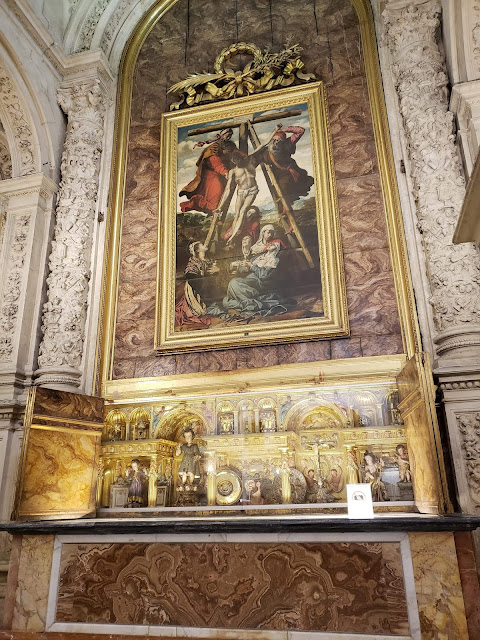






.jpg)
.jpg)
.jpg)
.jpg)
.jpg)
.jpg)
.jpg)
.jpg)
.jpg)
.jpg)
.jpg)
.jpg)
.jpg)
.jpg)

.jpg)
.jpg)
.jpg)
.jpg)
.jpg)
.jpg)
.jpg)
.jpg)
.jpg)

.jpg)
.jpg)
.jpg)
.jpg)
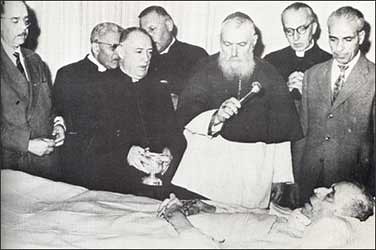
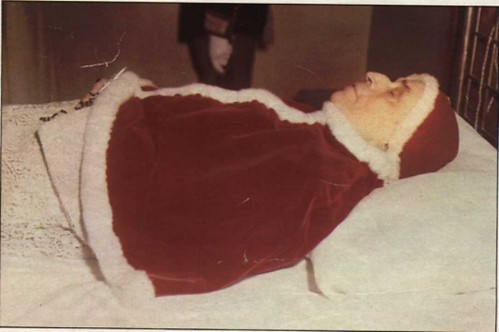
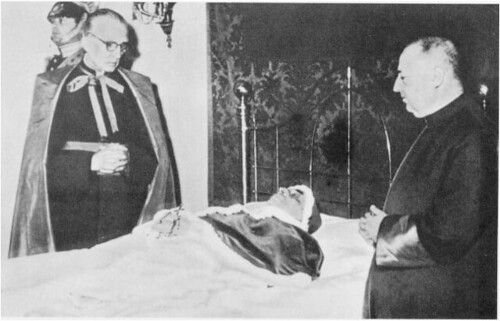
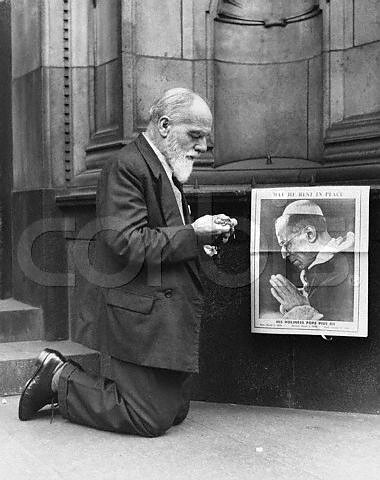
.jpg)
.jpg)
.jpg)
.jpg)
.jpg)
